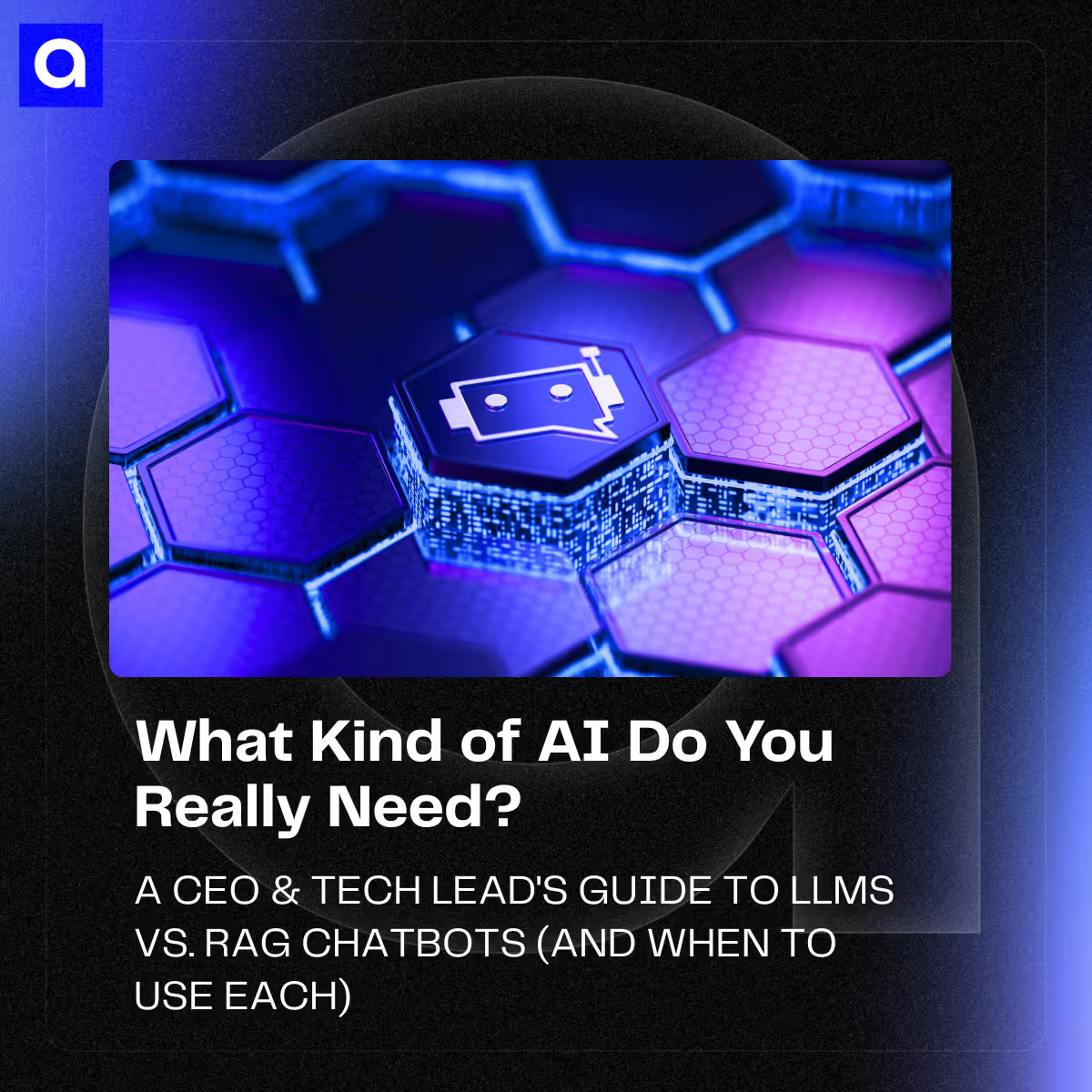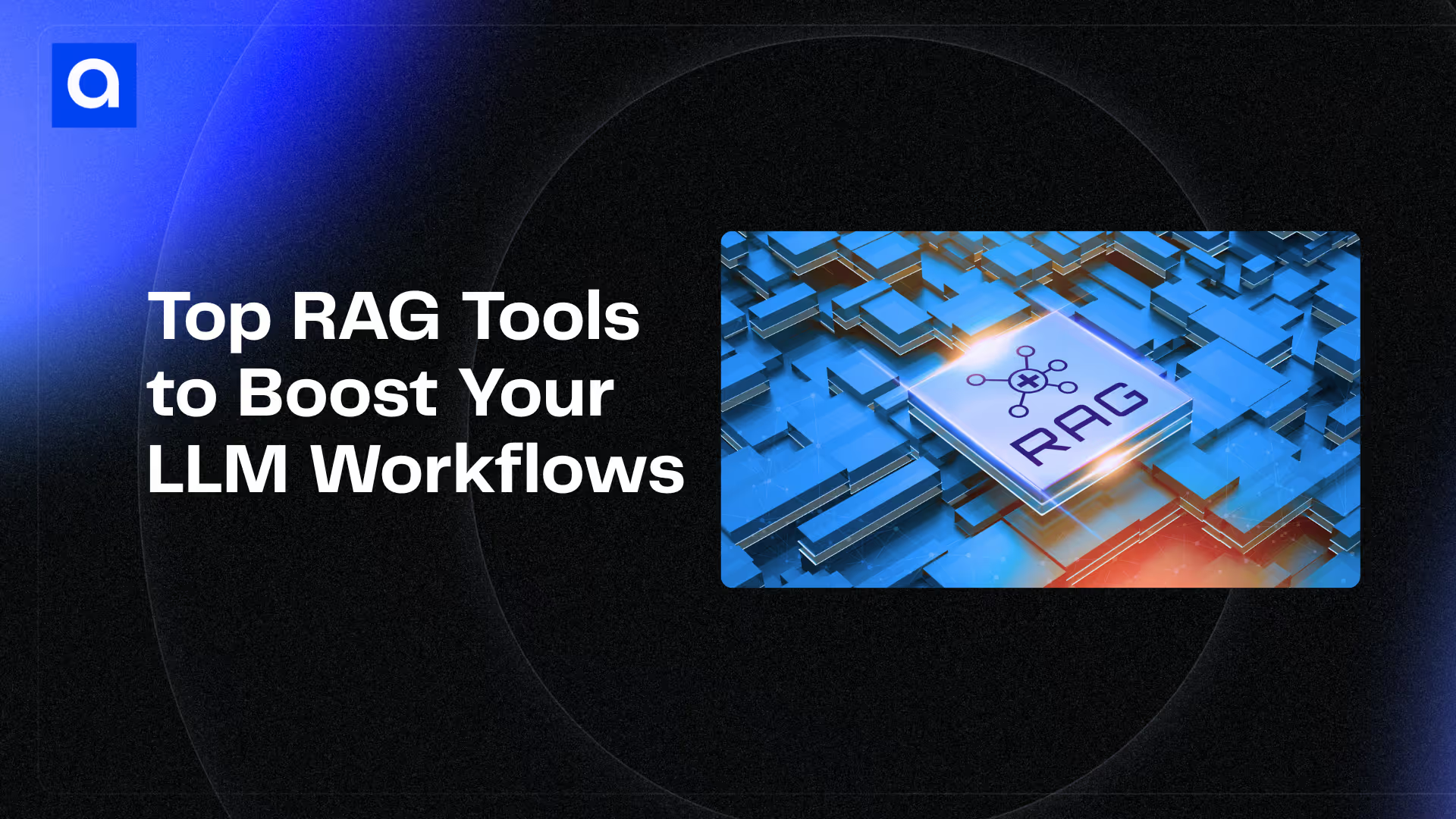
If you're building smart apps with large language models, chances are you've run into the same infuriating problem most coders face: your AI gives excellent answers to generic questions but fails when you want it to engage with your specific business data. That's where Retrieval-Augmented Generation tools are filling the gap, and they're revolutionizing how companies build smarter AI systems.
The RAG market is on fire, growing from $1.2 bn in 2023 to an estimated $11 bn by the year 2030. As 78% of companies adopt AI technologies, choosing the right RAG tool has turned into a development team's make-or-break point.
Here is your definitive guide to the top 10 RAG tools that can transform your LLM workflows in 2026, and all you need to know to select the best one for your project.
What Are RAG Tools and Why Should You Care?
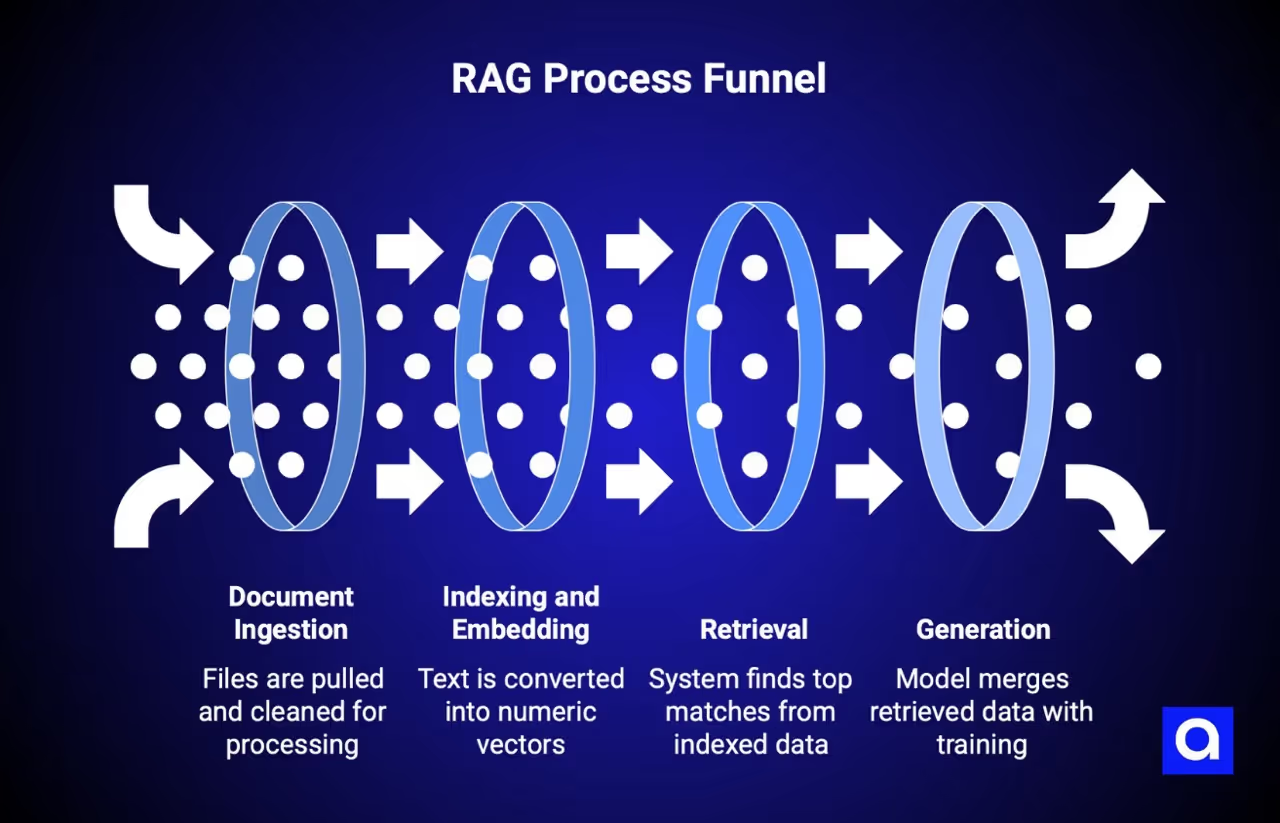
Think of RAG tools as the bridge between your LLM's general intelligence and your specific business knowledge. RAG brings together large language models and traditional information retrieval systems, allowing your AI to pull in fresh, relevant information before generating responses.
Instead of training a model from scratch or fine-tuning on your data (which gets expensive fast), RAG tools let you connect your LLM to databases, documents, or live data feeds. According to AWS, this approach lets developers provide the latest research, statistics, or news directly to their models.
How it works:
- Document ingestion: Files get pulled in and cleaned. It may look easy, but errors can be hidden.
- Indexing and embedding: Text changes into numeric vectors. The step attempts to maintain meaning, yet some details are lost.
- Retrieval: System looks for top matches. Good, though occasional irrelevant hits appear.
- Generation: The model merges found bits with its training. Answers are accurate, but not always perfect.
Why RAG Tools Are Game-Changers for Modern Workflows
And here's the kicker: even the smartest LLMs have knowledge cutoffs and no real-time data access. RAG addresses this by allowing your AI to stay current and accurate without the enormous cost of retraining.
According to LangChain, one of the most powerful applications is creating sophisticated Q&A chatbots that can answer questions about your specific documents and data sources. This opens up possibilities for customer support bots, internal knowledge bases, and specialist research tools.
The advantages are as clear as day: fewer mistakes, improved precision, and the opportunity to build tools that truly understand your business and what it's all about.
Top 10 RAG Tools for 2026
1. LangChain
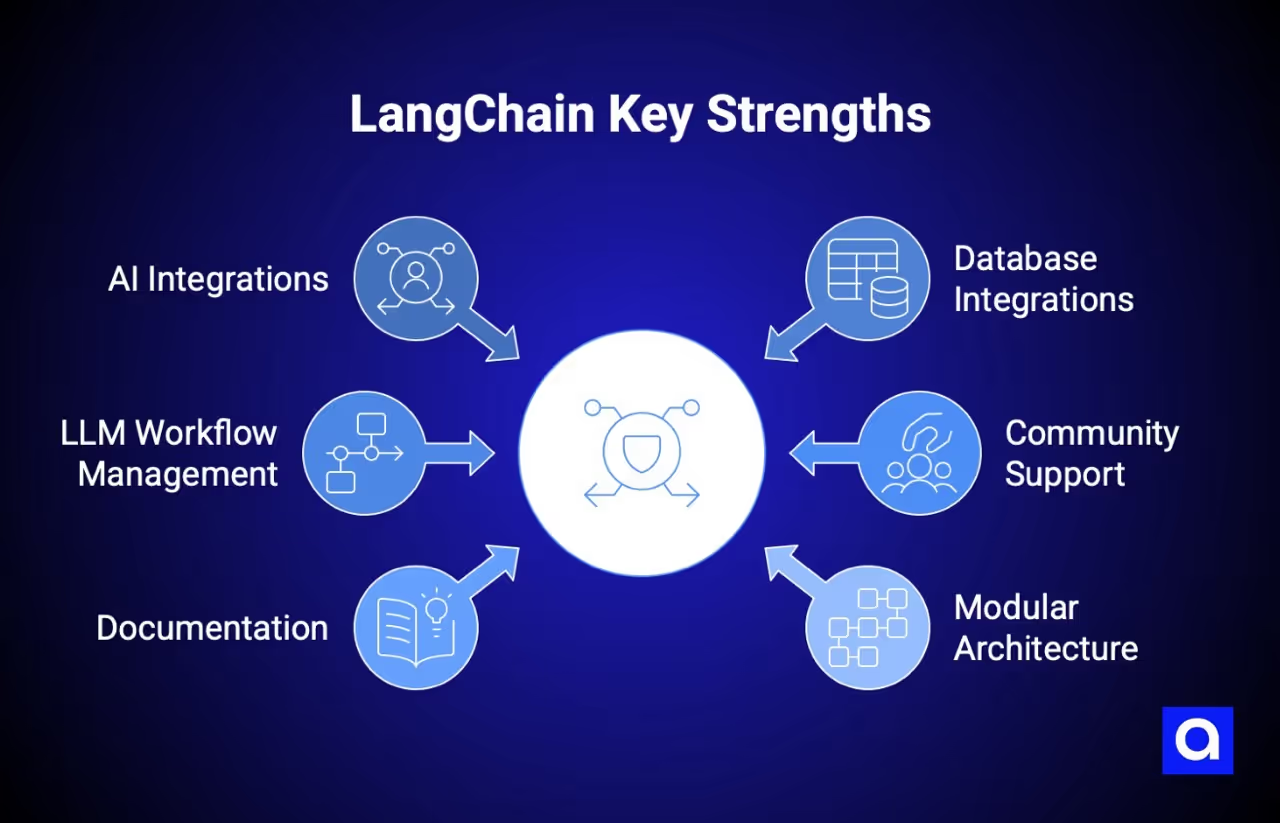
LangChain has become the dev favorite that hungers for flexibility above all else. According to Merlio, it's a general-purpose framework with more capabilities than most options on offer.
Key Strengths:
- Dense integrations with top AI services and databases
- Ideal fit for managing complex LLM workflows
- Strong community support and documentation
- Modular architecture that adapts to multiple use cases
Langchain is best for teams that are building varied LLM applications, are in need of maximum customization room, and are willing to accept an increased learning curve.
2. LlamaIndex

If LangChain is the Swiss Army knife, then LlamaIndex is the precision scalpel for data operations. Spheron Network says that LlamaIndex particularly excels in data gathering, indexing, and querying.
Key Strengths:
- Built to index and retrieve data optimized
- Advanced semantic search capabilities
- Works well with current RAG pipelines
- Structured summarization and caching mechanisms
LlamaIndex is the best option for those projects focused on efficient indexing and querying of large text datasets, especially when semantic search is the primary use case.
3. Haystack

Haystack is what you choose when you need industrial-strength document retrieval. As Medium writer Hey Amit puts it: "If LlamaIndex is the librarian, then Haystack is the industrial search engine."
Key Strengths:
- Built for production settings and large deployments
- Best solution for search-heavy RAG applications
- Complete end-to-end pipelines for question-answering and document search
- Enterprise-grade scalability and performance
Haystack is the best fit for those large organizations that need production-grade NLP systems, which can handle massive document volumes.
4. RAGFlow

RAGFlow combines RAG capabilities with agent functionality. It's designed to create what the developers call "a superior context layer for LLMs" that can adapt to enterprises of any scale.
Key Strengths:
- Agent capabilities for complex workflows
- Enterprise adaptability across different scales
- Streamlined RAG workflow management
- Integration with modern LLM architectures
RAGFlow is the best fit for complex enterprise workflows that need both retrieval capabilities and autonomous agent behavior.
5. ChromaDB
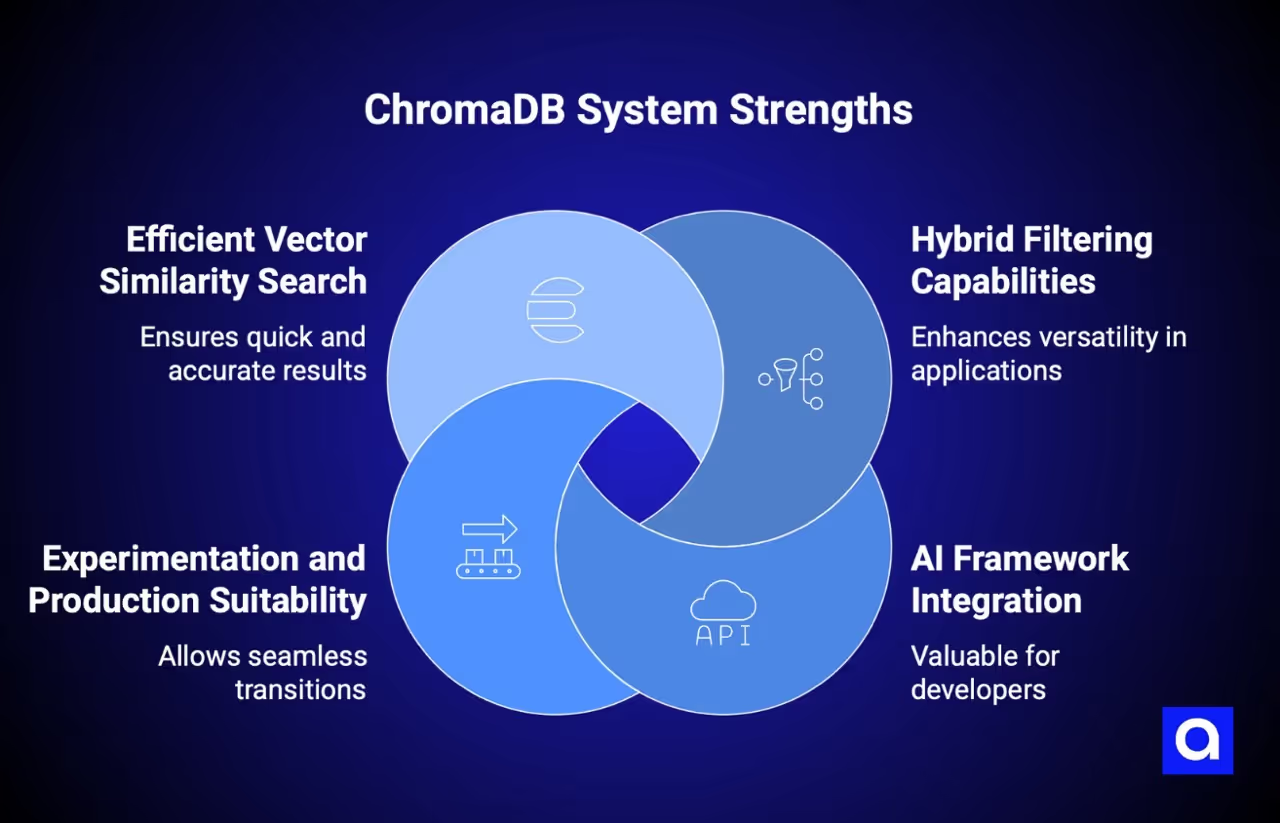
ChromaDB excels at combining different types of searches in a way that brings you the best results. It, according to Medium writer Manjunath Patil, integrates very smoothly with frameworks like LlamaIndex and features hybrid filtering on vector similarity and metadata fields as well.
Key Strengths:
- Hybrid filtering capabilities
- Strong integration with popular AI frameworks
- Suitable for both experimentation and production deployment
- Efficient vector similarity search
ChromaDB is the best fit for applications requiring sophisticated search combining semantic similarity with metadata filtering.
6. Meilisearch

Meilisearch brings something special to the RAG table: it combines keyword and semantic search while handling user input errors gracefully. Their hybrid search approach provides better answers in LLM workflows compared to that of its competitors.
Key Strengths:
- Typo-tolerant search capabilities
- Hybrid search combining BM25 and vector search
- Fast and user-friendly search experience
- Strong relevance scoring
Meilisearch is the best fit for eCommerce platforms, customer-facing search applications, and any system where users might make spelling mistakes.
7. Pinecone
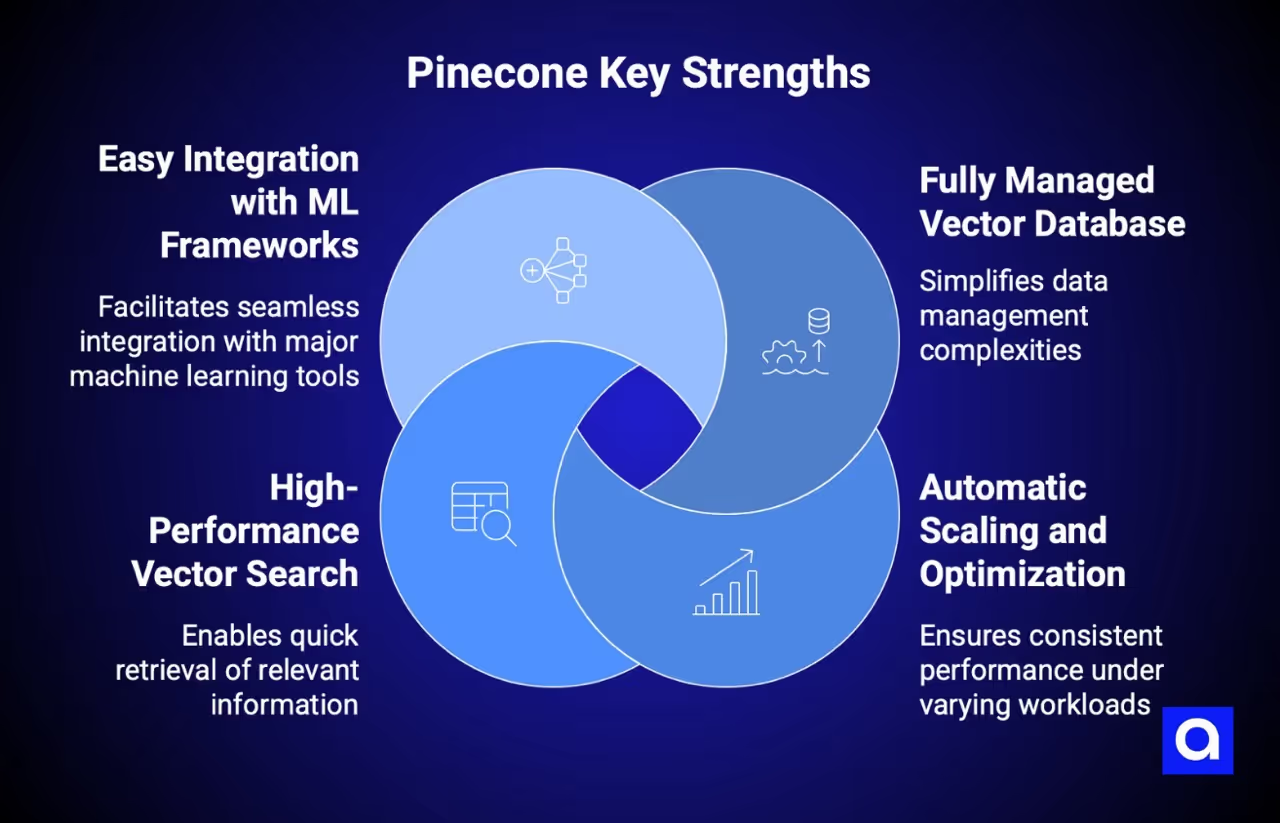
Pinecone removes the complexity of managing vector infrastructure by providing a fully managed service that scales automatically.
Key Strengths:
- Fully managed vector database service
- Automatic scaling and optimization
- High-performance vector search
- Easy integration with major ML frameworks
Pinecone is the best choice for companies needing vector search without the performance overhead of infrastructure management.
8. Weaviate

Weaviate combines vector search with knowledge graph capabilities, making it the best to utilize when use cases need to understand relationships between concepts.
Key Strengths:
- Graph-oriented data model with vector search
- Support for multi-modal data (text, images, etc.)
- Embedded machine learning capabilities
- GraphQL and REST APIs
Weaviate is ideal for knowledge management systems and applications that require entity relationship knowledge.
9. Qdrant
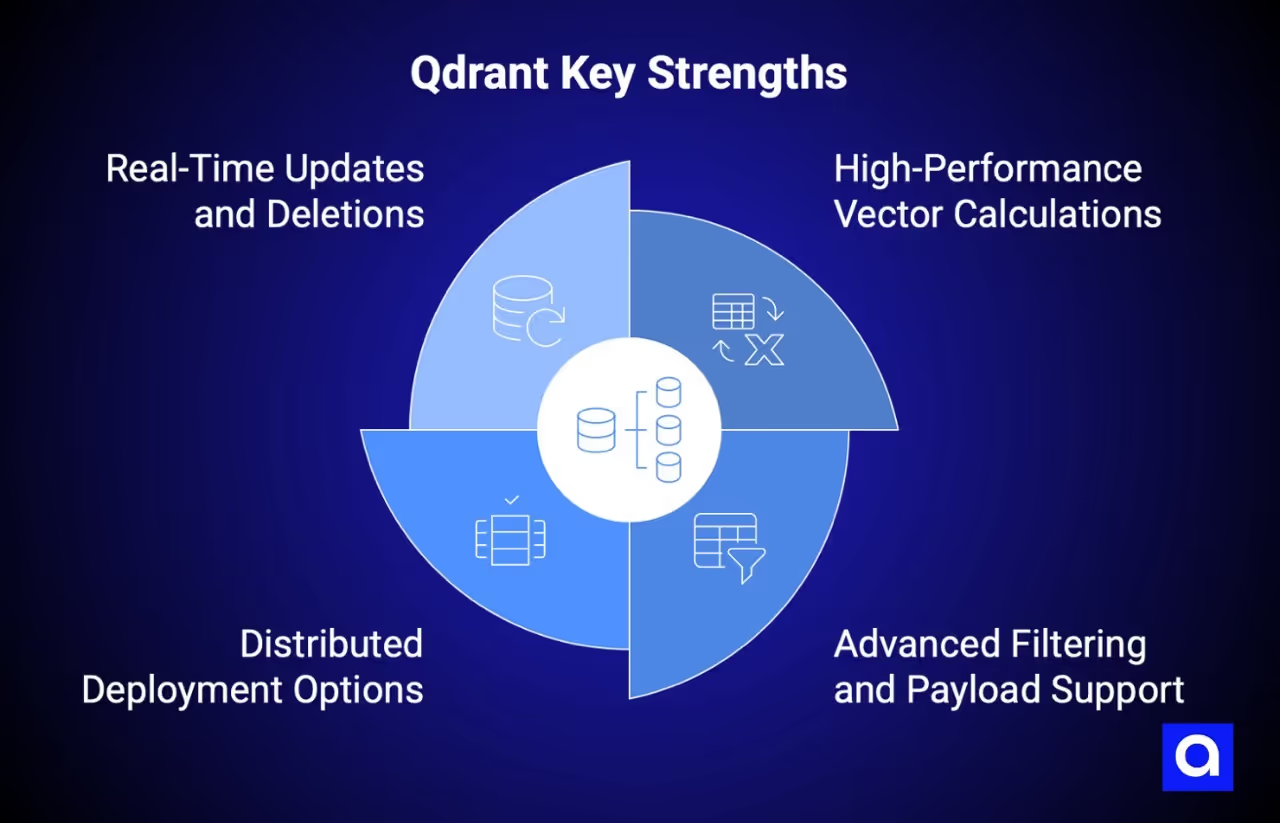
Qdrant is designed with emphasis on high-performance vector search, efficient filtering capabilities ,and support for advanced use cases.
Key Strengths:
- High-performance vector calculations
- Advanced filtering and payload support
- Distributed deployment options
- Real-time update and deletions
Qdrant is the best fit for high-throughput applications that require high-performance vector search with complex filtering requirements.
10. Elasticsearch
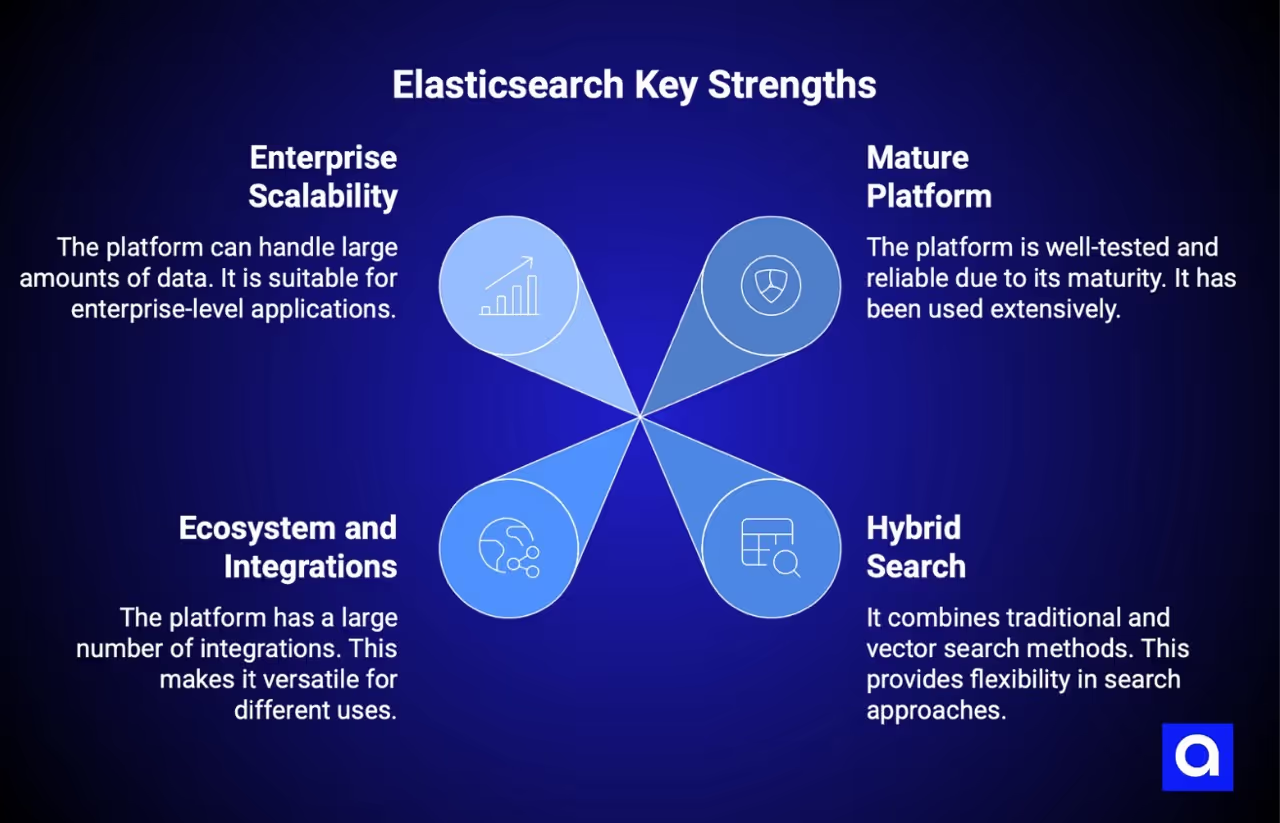
Elasticsearch now includes vector search capabilities, which combine its storied text search with modern AI functionality.
Key Strengths:
- Mature, battle-tested search platform
- Hybrid search mode with legacy and vector search
- Sizeable ecosystem and integrations
- Enterprise-scale scalability
Elasticsearch is the best fit for organizations already using the Elastic Stack or needing to combine traditional search with vector capabilities.
RAG Tools Comparison at a Glance
How to Choose the Right RAG Tool
Selecting the right tool is just about asking yourself a couple of questions:
What's the technical level of your team? If you're starting a new project, managed solutions like Pinecone or Meilisearch would be better than creating with LangChain from scratch.
What's your scale? Small projects can start with simple ones, but if you're going to work with millions of documents, something like Haystack or Elasticsearch would be a better fit.
How sophisticated are your workflows? Simple Q&A applications are perfect with LlamaIndex, but for agents and multi-step reasoning, turn to RAGFlow or LangChain.
What is your budget? Open-source solutions such as ChromaDB and Qdrant can keep costs low, while managed services provide ease of use at a premium.
Firecrawl analysis says the secret is to take into account your unique use case demands, technical skill, and scalability demands before making the call.
The Future of RAG Tools
The RAG landscape continues evolving rapidly. During 2026, the diverse ecosystem provides options for organizations at various stages of AI maturity, from experimental proofs-of-concept to large-scale deployments.
We're seeing trends towards multi-modal RAG (the combination of text, images, and other types of data), better assessment tools like RAGAS and TruLens, and integration with autonomous AI agents.
Ready to Transform Your AI Workflows?
RAG tools are no longer niceties. They are requirements for any serious AI use case that have to be accurate, current, and contextual to your business. Whatever you choose between the flexibility of LangChain, the specialization of LlamaIndex, the industrial strength of Haystack, or the enterprise orientation of RAGFlow, you're investing in AI that really works for your organization.
The question isn't if you should use RAG, but when you can start. With the right tool and methodology, you'll be creating AI applications that not only astound with their response but actually do solve real business problems.
At Azumo, we've helped companies across all sectors deploy intelligent applications through these exact same RAG tools and templates. From healthcare networks to fintech products, we've seen firsthand how a well-executed RAG deployment can transform business operations.
Want to see what RAG can do for your company? Let's talk about how to build AI that works as hard as you do.


.avif)
